Best corn companion plants – 7 crops guaranteed to help you get bigger yields and repel troublesome pests
Including flowers and herbs to prevent corn earworm from eating your crop

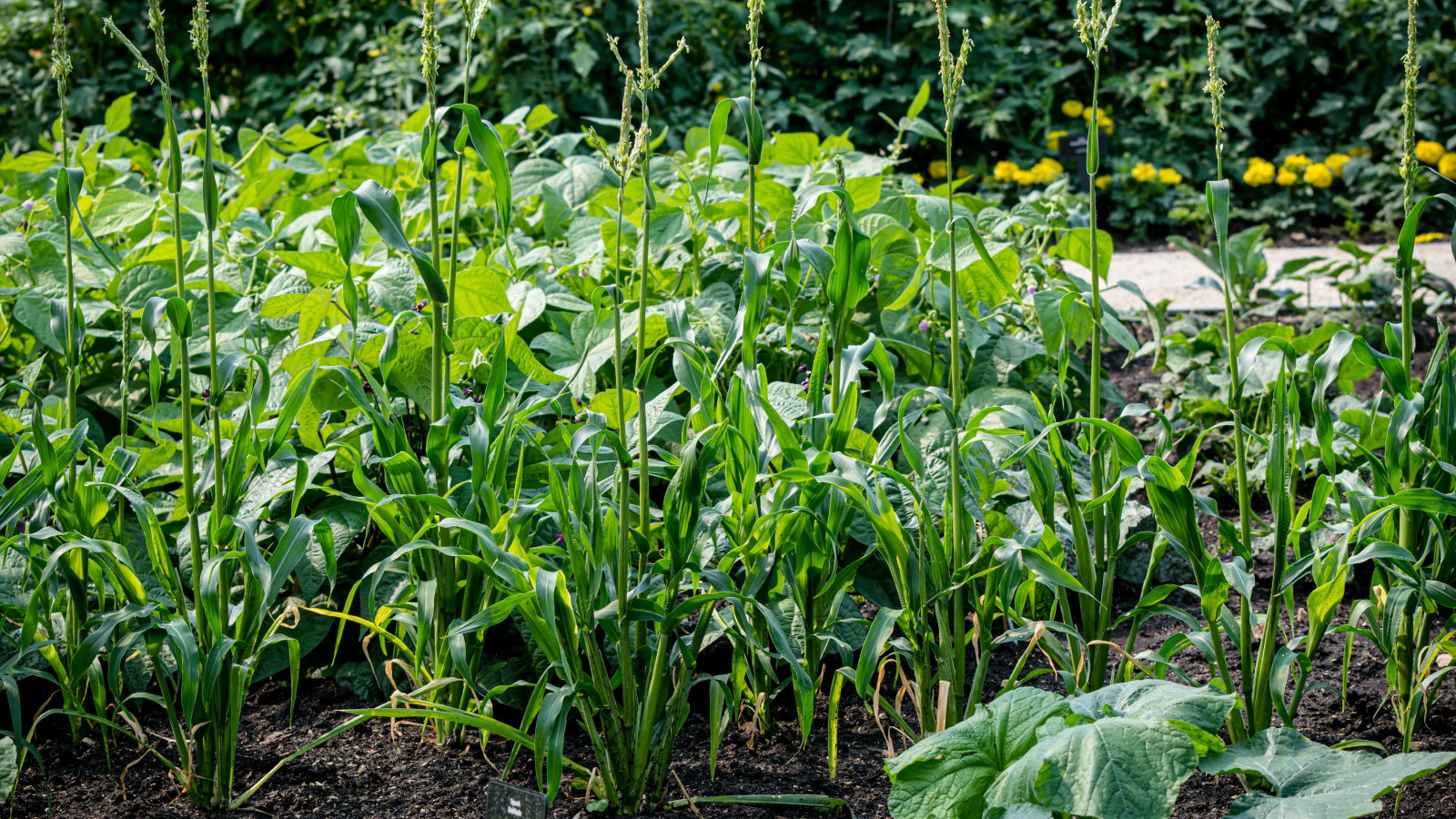
Corn is a glorious summer homegrown vegetable that tastes perfect when eaten within an hour of being picked from the plot. Freshly harvested corn surpasses any you get in the store, and that is why it is such a popular crop in home vegetable gardens.
You need to grow a good-sized block to get good wind pollination, and you will need to water in hot spells. But all the space and care involved is more than paid off when you enjoy those sweet, tasty kernels.
To help you get the best harvest when growing corn, I recommend companion planting. I grew corn every year as a professional kitchen gardener, and still do on my home plots. The right corn companion plants help get bigger plants, higher yields, and combat potential pest problems. I have picked some fantastic companion plants for corn, as well as highlighted some crops to never pair with corn.
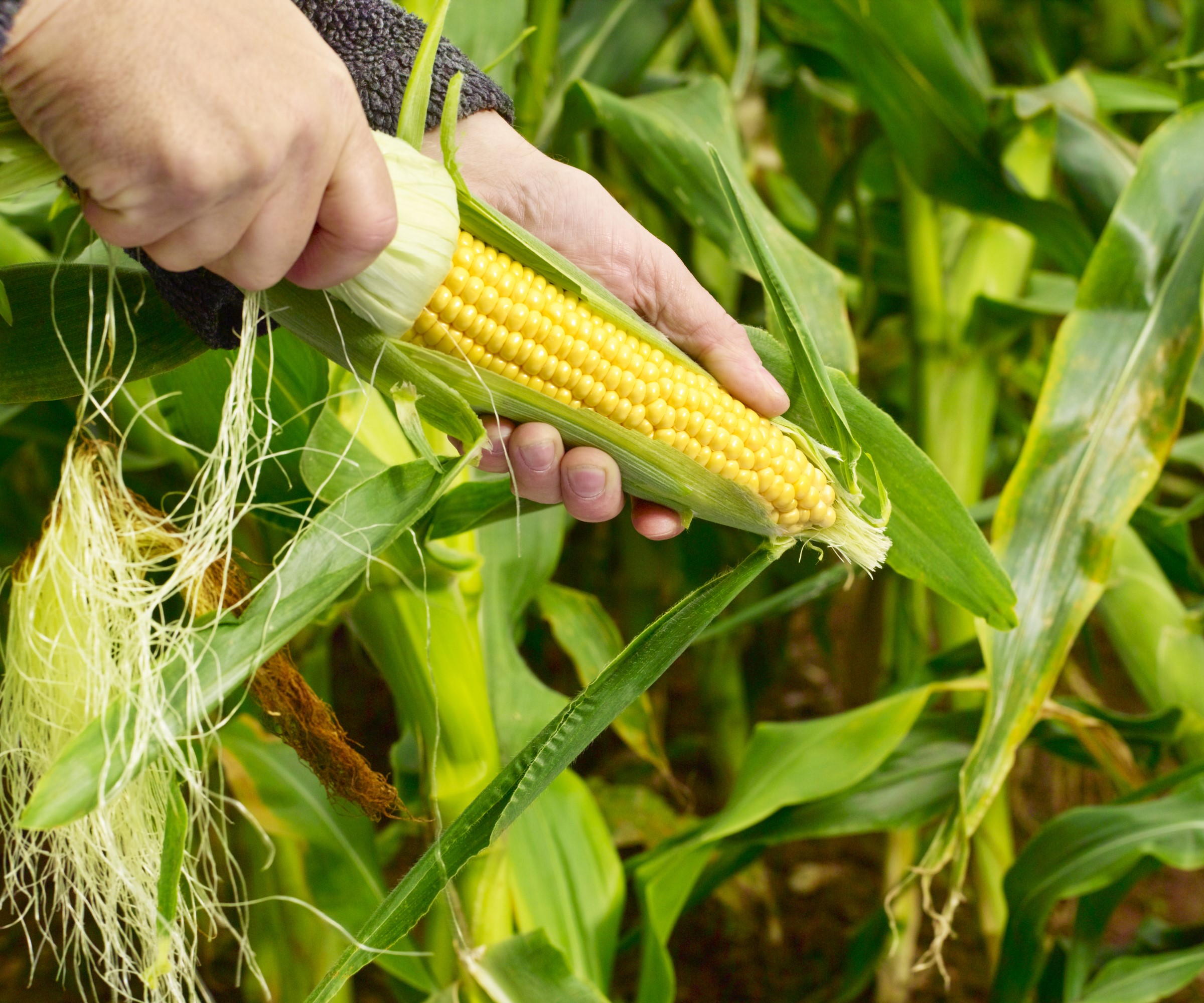
The best corn companion plants – plus some great alternatives to consider
As well as helping your corn grow strong and suffer less from insects through companion planting, planting corn can also provide mutually beneficial relationships with other crops that can thrive in the shade beneath its tall stalks.
Companion planting offers benefits to both crops in many of the examples below.
1. Pole Beans
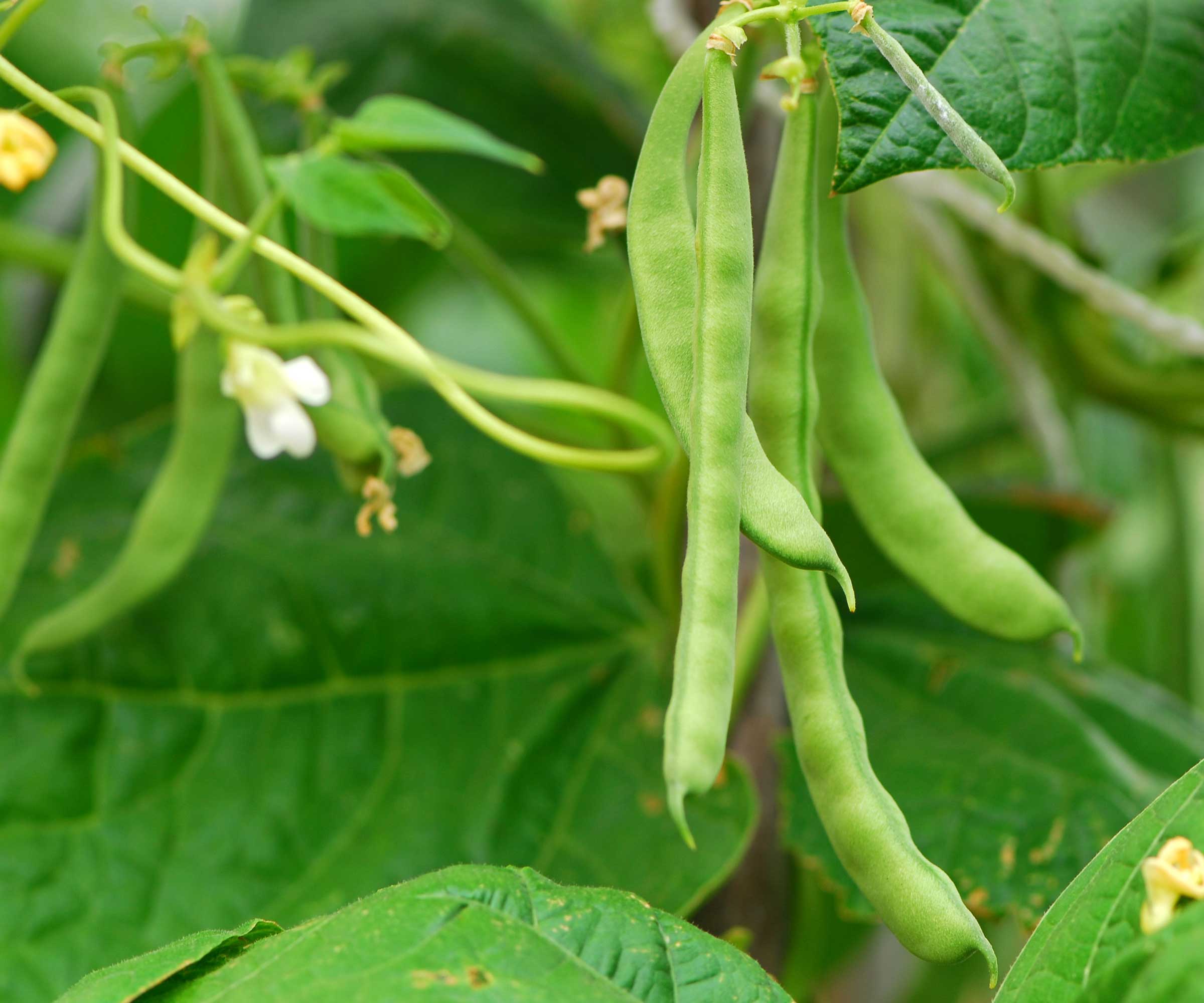
Beans and corn are two of the classic 'Three Sisters' method of companion planting, along with squash (which we’ll come to later). This historic technique was first used by Native American tribes, and has been copied by gardeners worldwide over the years.
To explain beans and corn as companion plants in simple terms, beans take nitrogen from the air and fix it into the soil, providing nutrients for the corn to enjoy. Meanwhile, the tall stalks of the corn plants can be used as a natural vegetable garden trellis for the pole beans to climb.
Design expertise in your inbox – from inspiring decorating ideas and beautiful celebrity homes to practical gardening advice and shopping round-ups.
The two crops thrive in similar conditions and also require regular watering throughout the season. So they always work well as a planting combination.
There are many types of pole beans you may consider, including climbing French beans, runner beans, lima beans, and many more.
As an alternative to pole beans, you can grow peas. These plants also fix nitrogen in the soil and will enjoy scrambling up the corn’s sturdy stalks.
Discover the range of bean seeds to plant at Amazon
Discover the range of bean seeds to plant at Walmart
Discover the range of bean seeds to plant at Burpee
Discover the range of bean seeds to plant at True Leaf Market
2. Squash

Winter squash is the classic third crop in the aforementioned historic 'Three Sisters'. The benefits it offers as a companion plant for corn come from its sprawling growth habit.
The large leaves of squash plants cover the soil, smothering weeds, regulating the soil temperature, and helping to retain moisture in the ground for the corn and beans.
You can get squash in different sizes, shapes, and colors, but I am always a fan of butternut squash. For example, you can get All-America Selections-winning Waltham Butternut squash seeds at Burpee.
There are alternatives to winter squash that can play the same role. Such as growing pumpkins to cover the ground around the base of the corn, or planting watermelons or melons for the same reason.
With these larger fruits, ensure the vines stay at ground level and don’t start climbing the corn plants, which could get damaged by the weight of heavy melons or large pumpkins.
3. Cucumbers
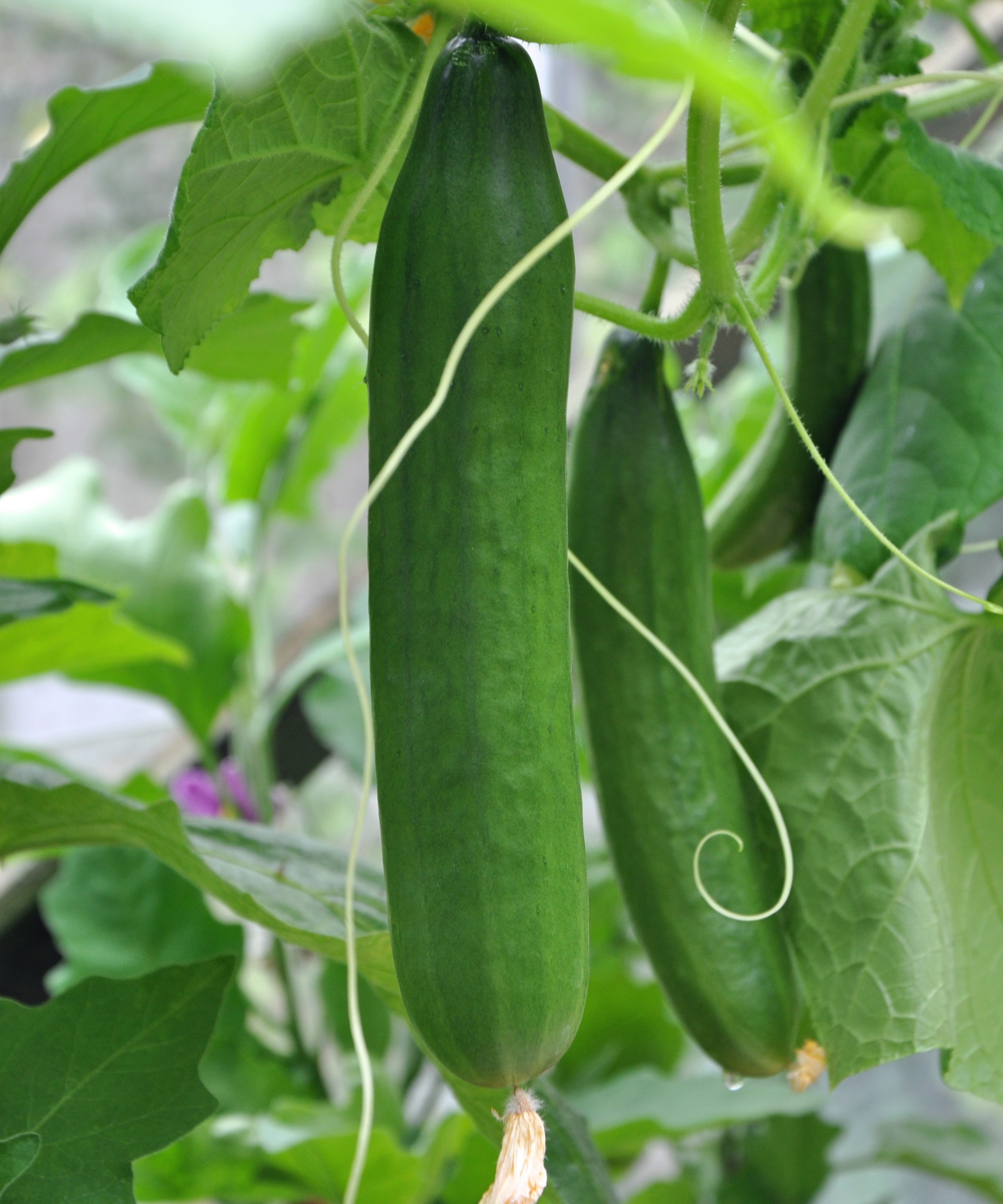
Cucumbers and corn are both summer crops and combine well together when grown in the vegetable garden.
For starters, both crops prefer sunny positions and consistently moist soil throughout the season, meaning their maintenance requirements are similar, and you can confidently get a great crop of both to enjoy.
The large foliage of cucumber plants shades the soil around the corn, smothering weeds and retaining moisture.
While the corn works for cucumber companion planting, as it provides some shade for the cucumbers (which helps in warmer climates) and a sturdy pole for the plants to climb. When the cucumbers climb the corn, it raises the fruits off the ground and away from pest damage.
See the range of cucumber seeds to plant at Amazon
See the range of cucumber seeds to plant at Walmart
See the range of cucumber seeds to plant at Burpee
See the range of cucumber seeds to plant at True Leaf Market
4. Lettuce
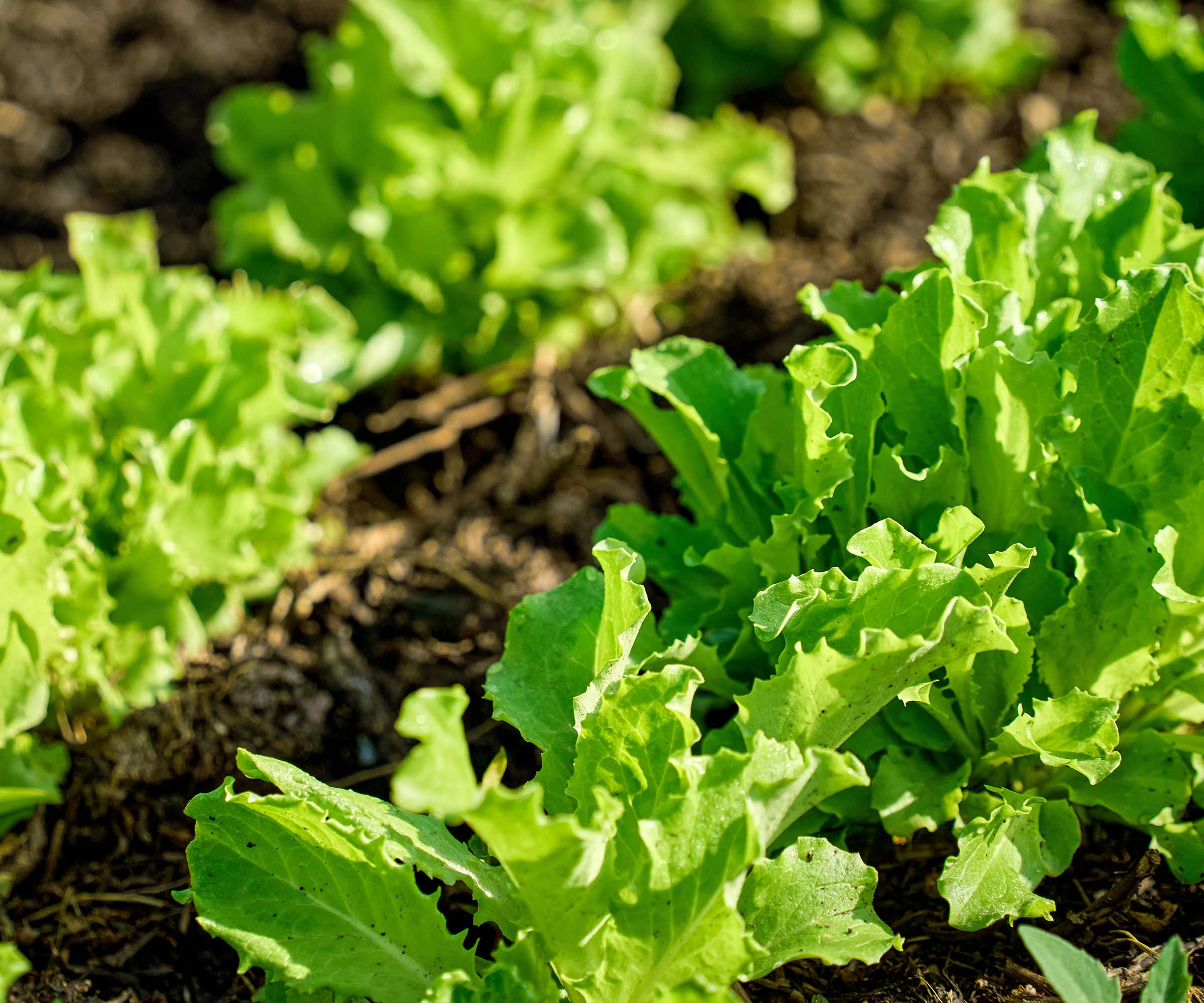
Planting lettuce near the base of the corn plants, or in rows along the side, helps as a ground cover to smother weeds and help retain moisture in the soil.
When you grow lettuces, they are liable to bolt in hot summer weather. However, planting lettuce next to corn allows it to enjoy the shade from the tall corn plants, which staves off bolting and ensures a longer harvest of lettuce.
This tactic also works with other cool-season leafy greens. When you grow spinach as a corn companion plant, for example, it reaps the same rewards. As lettuce, spinach, and other leafy crops all like lots of water, as does corn, they can get on well in the same space.
See the range of lettuce seeds to plant at Amazon
See the range of lettuce seeds to plant at Walmart
See the range of lettuce seeds to plant at Burpee
See the range of lettuce seeds to plant at True Leaf Market
5. Marigolds
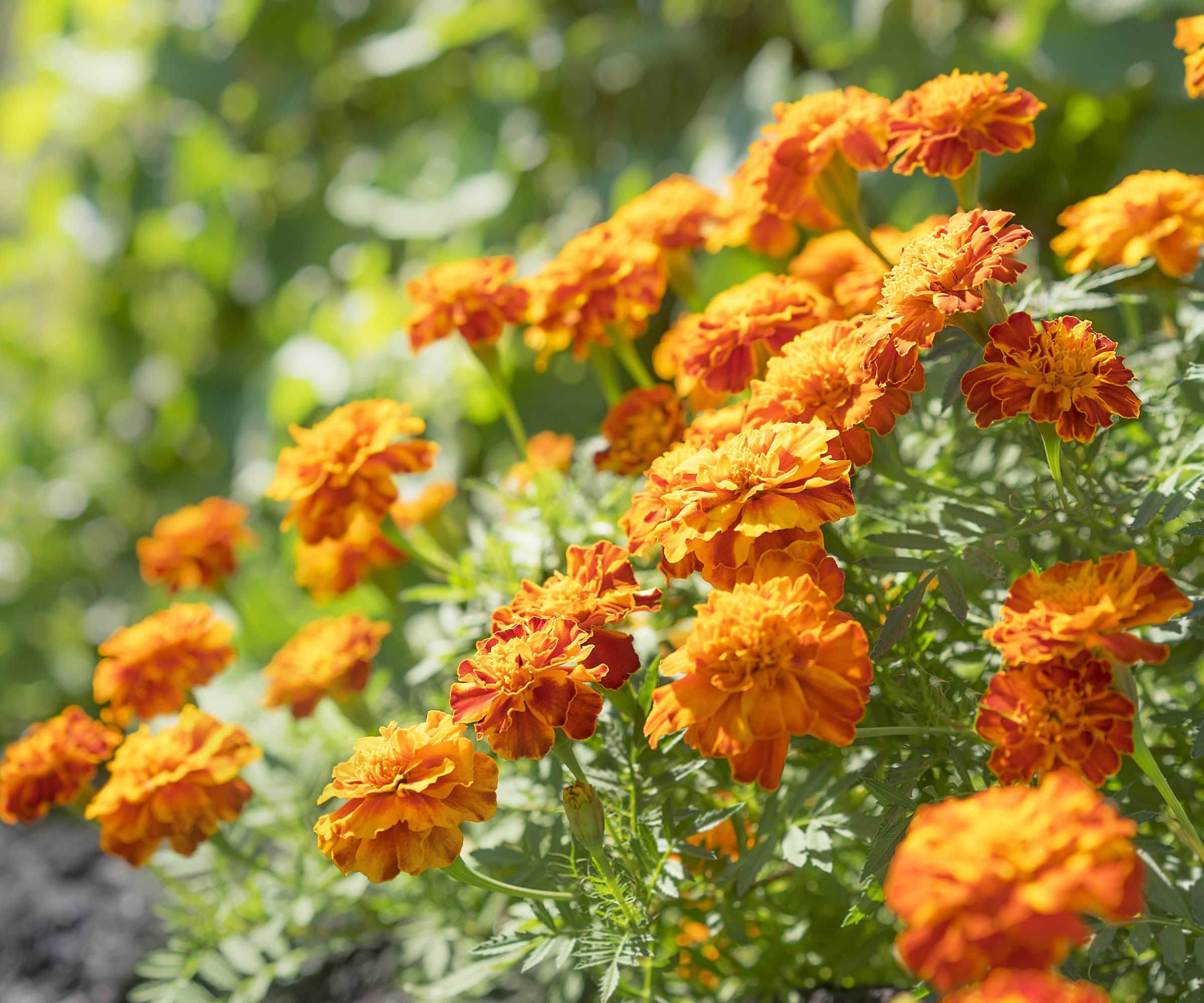
Marigolds are fantastic annual flowers to utilize as corn companion plants.
These bright and cheery plants repel many common pests, including the dreaded corn earworm. The corn earworm is found throughout the United States and feeds on corn kernels. Marigolds are also effective in repelling aphids, a common pest of corn.
As well marigolds keeping bugs away, thanks to the strong aroma emitted from marigolds, it can also prevent root-knot nematodes in the soil, as well as attract many beneficial insects that are natural predators to vegetable garden pests.
It is simple to grow marigolds from seed, and the best varieties to use for companion planting are French marigolds, as they are more pungent than other varieties. Such as this pack of French petite marigold seeds at Amazon.
6. Nasturtiums

As mentioned above, aphids are a common problem gardeners encounter with their corn. In small populations, the crop can survive fine. However, a heavy presence of aphids can stunt the corn plant as they suck the sap and ultimately affect the yield.
Aphid populations can be controlled by growing nasturtium near your corn. The nasturtiums not only look attractive, with nasturtium varieties coming in a range of colors, but also act as a potent and proven trap plant for aphids. The aphids will be more attracted to the sacrificial nasturtiums than to your corn plants.
When using nasturtiums for pest control in this way, it is important to plant the nasturtiums several feet from the corn. Otherwise, the aphids may simply pop over to the corn from your trap crop.
You can enjoy any nasturtiums that have not been nibbled by the aphids. Nasturtiums make a great edimental plant, as the leaves and flowers are both edible and have a distinctive peppery taste that can boost summer salads.
For an attractive and beneficial nasturtium, these 'Alaska' nasturtium seeds at True Leaf Market produce a mix of blooms in shades of red, pink, orange, and yellow.
7. Thyme
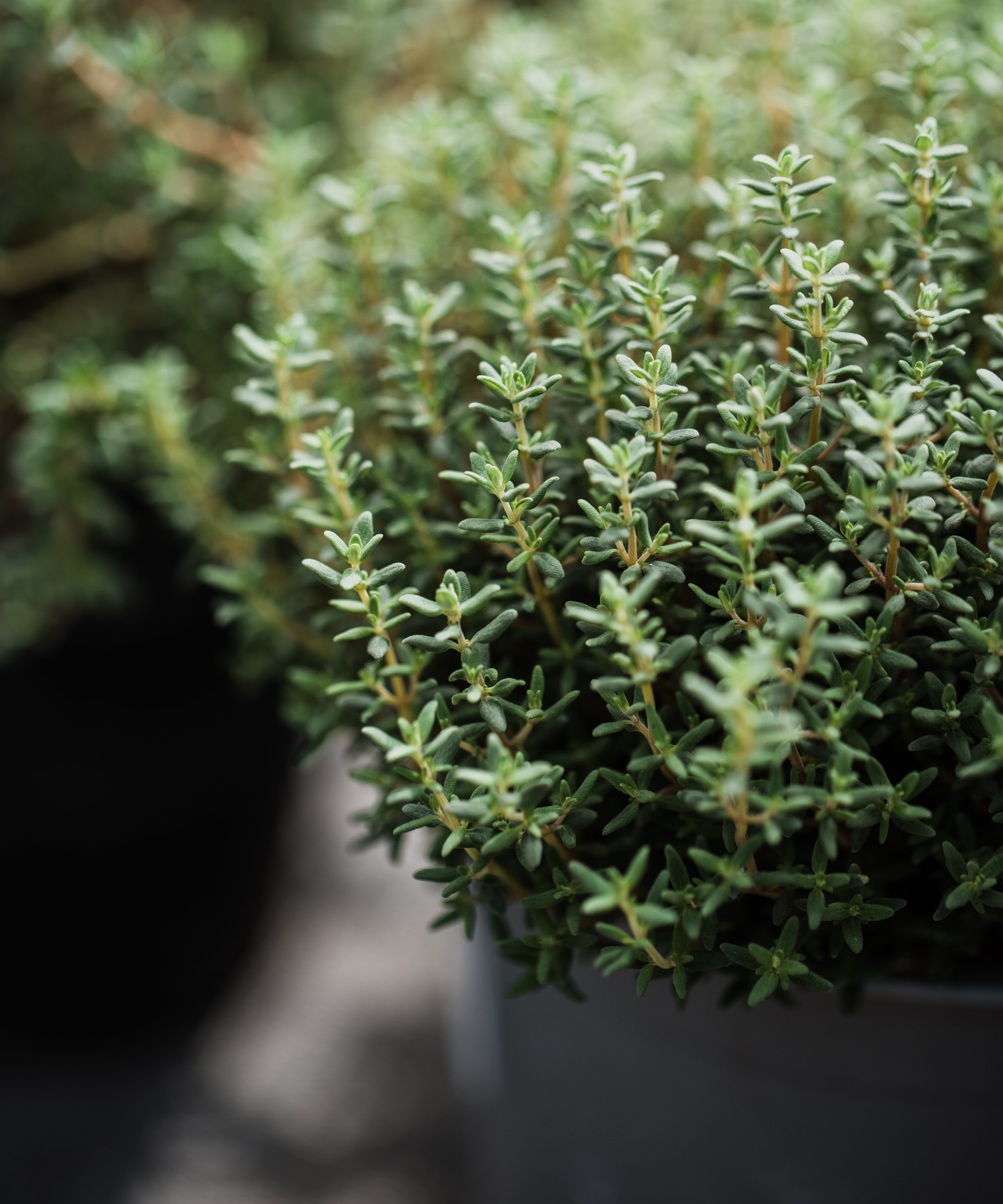
Thyme makes a highly useful corn companion plant as the aromatic herb is great at repelling the corn earworm.
The corn earworm causes great damage to the crop as it eats the foliage, ears, and immature cobs of corn plants. Luckily, the strong aroma of thyme is known to repel corn earworm and can be a valuable way to protect your corn plants.
Corn and thyme do have very different requirements when it comes to watering. Corn likes lots of regular moisture, while thyme does not.
So, usually the best way to combine these two plants is to grow thyme in containers near the corn plants. Or, you can plant thyme at the ends of rows of corn and take care not to soak those particular areas when you water the corn.
You can get live English thyme plants at Amazon to use for companion planting.
Corn companion plants to avoid

There are lots of beneficial corn companion plants, but there are also some popular crops that you don’t want to plant with your corn. We reveal some here to help you avoid making any companion planting mistakes.
- Tomatoes and corn both attract the same pests, including the corn earworm and tomato hornworm. You increase the chances of infestations if you grow tomatoes alongside your corn.
- Eggplant and corn also host the same pests, just like tomatoes. To reduce the risk of corn earworm affecting crops, refrain from growing eggplant near corn.
- Brassicas in the cabbage family, including cabbage, broccoli, and kale, are heavy feeders that compete with corn for nutrients. It can lead to stunted and deprived corn if they are planted together, while the brassicas may struggle in the shade of the corn.
FAQs
Can I plant onions next to corn?
Growing onions benefits companion planting, as their pungent aroma deters many common pests that trouble vegetables. You can plant onions beside corn, but ensure both are properly fertilized, as they require plenty of nutrients throughout the season.
Can you plant peppers next to corn?
Peppers are another crop targeted by corn earworm, so it is not advisable to grow bell peppers or chili peppers with your corn plants.
When you harvest corn, there is so much choice of what to do with it, including grilling it, roasting it, making fritters, whipping up a corn salad, or much more. Our guide to grilling corn on the cob reveals the perfect method for enjoying this classic summertime dish, helping you to get it right every time.
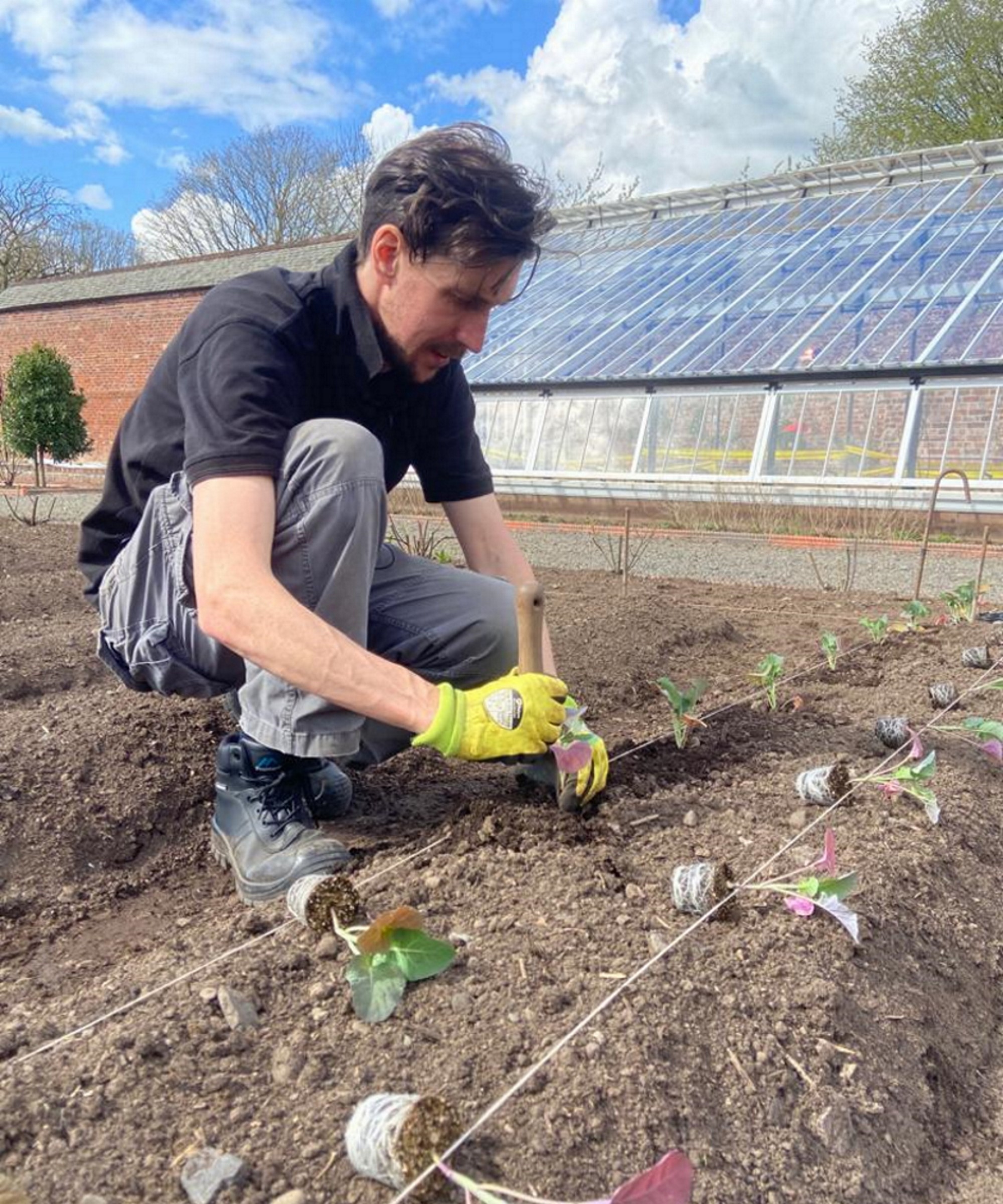
Drew has worked as a writer since 2008 and was also a professional gardener for many years. As a trained horticulturist, he worked in prestigious historic gardens, including Hanbury Hall and the world-famous Hidcote Manor Garden. He also spent time as a specialist kitchen gardener at Soho Farmhouse and Netherby Hall, where he grew vegetables, fruit, herbs, and cut flowers for restaurants. Drew has written for numerous print and online publications and is an allotment holder and garden blogger. He is shortlisted for the Digital Gardening Writer of the Year at the 2025 Garden Media Guild Awards.